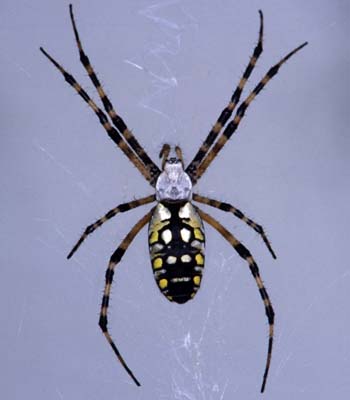
Adult yellow garden spider, Argiope aurantia.
(Photographer: Lyle Buss, University of Florida)
After mating, the female produces one or more egg sacs which are then attached to one side of the web near the area where her body rests. The pear-shaped egg sac is brownish in color, papery and pointed near the apex. The sac may contain from 400 to over 1000 eggs. These eggs hatch in either late summer or autumn, but the spiderlings (immatures) do not leave the egg sac until the spring.
The yellow garden spider is found in sunny areas near flowers, tall plants, shrubs, along fences, minimally disturbed grasslands, and around homes throughout the United States, southern Canada, Mexico and Central America as far south as Costa Rica.
This species can kill prey twice its size, and feeds on several types of grasshoppers, honeybees, butterflies, aphids, flies and wasps.
Images
To save the Web-optimized images shown below to your hard drive:
|
Click to access Display and Print quality images. |
|
Click to access Display and Print quality images. |
|
Click to access Display and Print quality images. |